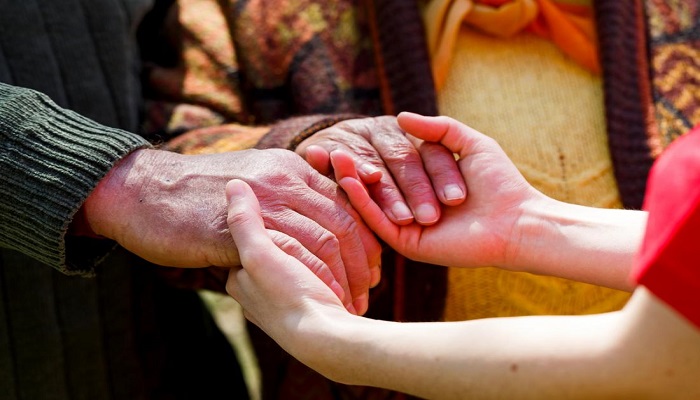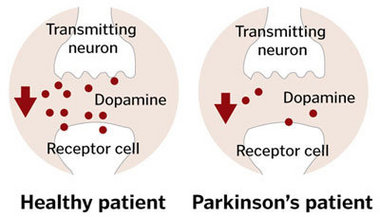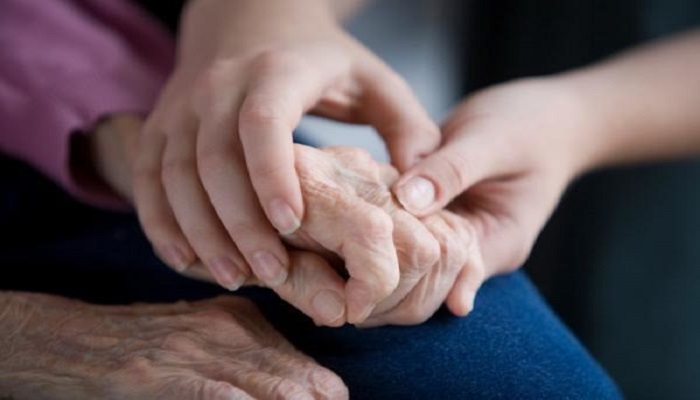Parkinson’s disease is nervous disorder. It affects the nervous coordination which eventually affects the body and muscle movement. The initial signs are tremors in hand and later it leads to stiffness and slowing of muscle and body movements. This is a progressive neurodegenerative disorder in which the symptoms gradually get worse.
According to reports by NIH, over half a million US population is having Parkinson’s disease. About 90% cases of Parkinson’s patients have familial history of this disease. While 10% cases are sporadic.
Signs and symptoms
Like many other diseases, the symptoms of Parkinson’s disease also vary from one person to other. Secondly, the severity of symptoms also varies. Initially, the symptoms usually appear on one side of body and gradually affect the other side of body as well. These symptoms are:
1. Tremors and shaking of limbs
Initially, the person with Parkinson’s disease has these conditions of shaking and tremors in limbs. The person may often rub his fingers and thumb together. This is known as pill-rolling tremor. Moreover, you may feel difficulty while gripping something.

2. Stiffness of muscles
When muscular stiffens occurs, the condition gets painful and it becomes difficult to move and perform everyday task. For instance, the person walks slowly, in short steps and it feels like as if you are dragging yourself.

3. Intellectual abilities are affected
As Parkinson’s disease is related to brain, it affects the intellectual abilities of the patient. For instance, the person have difficulty in talking, the speech becomes slurry and monotone. Moreover, he may have problem while writing something. This is also due to stuffiness of muscles.
4. Posture changes
When a person is having Parkinson’s disease, his posture as well as the balance of body also affects. This involves more stooped posture, unconscious smiling, frequent blinking of eyes and swinging limbs.
Complications
Symptoms of Parkinson’s disease gradually get worse and complicated. These complications involve:
- Thinking difficulties
- Depression
- Dementia
- Sleep disorders such as insomnia
- Difficulty to chew and swallow food
- Digestive issues such as constipation
- Frequent urination
- Fatigue and cramps in different body sides and limbs
- Sexual dysfunction
Causes of Parkinson’s disease
Parkinson’s disease is neurodegenerative which means the brain cells gradually die. The neuron cells which develop and produce neurotransmitter molecules dopamine, affects the most. Consequently, there are low levels of dopamine in brain which leads to abnormal brain activity and lack of coordination.

What actually causes Parkinson’s disorder is a complicated point. However, there are few factors which appear to be related with this disease. These are:
- Genetics: Certain mutations in genes which normally control the brain cells development as well as dopamine production appear to be possible causes of Parkinson’s.
- Environmental factors: Research indicates that there are certain changes which appear in brain of patients with Parkinson disease. These include physiological and chemical changes. The research also indicates that there are some factors which ‘trigger’ these events and changes in brain chemistry such as certain toxins.
- Chemical changes in brain cells: These changes involve formation of Lewy bodies. These are clumps and aggregations of specific substances. These substances can be proteins and related chemical compounds. For instance, one of these substances is alpha-synuclein protein. These clumps or Lewy bodies are observed in brain cells of patients having Parkinson’s disorders.
Risk factors
Here are some factors which increase your risks of suffering from Parkinson’s disease. These are:
- Age: Elderly people are at more risk. In general, the age of onset for Parkinson’s disease is 60 years. Young rarely develop this disease.
- Gender: Men are at more risks of this disease compared to women.
- Genetic makeup: Genetics have a close association with this disease. Having a family history of this disease increases your risk as well.
Diagnosis tests
There is as such no specific diagnosis test for Parkinson’s disease. observing your signs and symptoms and nervous state, your neurologist can determine if you have this disease or not. Sometimes, the doctor may perform a single photon emission computerized tomography based scanning (SPECT) named as dopamine transporter (DAT).
Similarly imaging and other scanning technique are used for detection in abnormality in brain structure. These include MRI, PET, and CT scans. These scanning techniques along with detailed examination of signs and symptoms help in diagnosis of disease.
Treatment options
Unfortunately, Parkinson’s disease has no cure till now. Researchers aim to find a gene therapy based treatment option for this disorder. On the other hand, there are few medications which help to relieve the symptoms to some extent. Moreover, the doctors sometime recommend lifestyle changes and speech therapies which help a lot.
Medications for Parkinson’s disease
Medicines used for Parkinson basically increase the dopamine levels in brain t improve cognitive functions. Or these may act as substitute for dopamine. These can be of these types:
- Medicines to increase the dopamine level: Levopoda is a natural brain chemical. The most effective drug for Parkinson is Carbidopa-levopoda. It prevents conversion of levopoda into dopamine outside the brain cells. Thus, it relives symptoms considerably. This medicine is commonly known as Duopa.
- Medicine to mimic dopamine action: You may have heard of dopamine agonists. These drugs acts like dopamine to help in brain functioning and coordination. These are short-term inject able drugs.
- Medicines which inhibit dopamine breakdown: One important factor to sustain the levels of dopamine is to inhibit and limit its breakdown. Some medicines such as Selegiline and Safinamide (Xadago) serve this purpose. These inhibit the enzymatic activity of monoamine oxidase B (MAO B) which catalyzes the breakdown of dopamine. Thus, the levels of dopamine sustain in brain cells.
- Anticholinergics: These drugs relieve tremors associated with Parkinson’s disease. benztropine is one example of anticholinergic medicines.
Based on these strategies, there are many medicines which relieve the symptoms. These are more effective at initial state of disease before the symptoms get worse. However, these medicines have some side effects as well. The most common of these include nausea, hallucination, swelling of joints and joint pain etc.
Deep Brain Stimulation (DBS)
Deep brain stimulation technique (DBS) is a surgical strategy for Parkinson’s treatment. In this treatment, surgeons implant electrodes in patient’s brain. A generator is implanted in chest area which is connected to these electrodes. This generator and electrode serve the purpose of electric impulse generation. These impulses eventually help in improving brain function and coordination.
However, deep brain stimulate is usually for advance stage of disorder. It can relive tremors, reduce stiffness of joints and improve movement and brain functioning.
Lifestyle for Parkinson’s patients
If a person is having Parkinson’s disease, he/she should be careful about lifestyle choices. Here are some tips which may help to relieve the symptoms of Parkinson’s.
1. Healthy diet
A healthy balanced diet is a solution to many health problems. Some of the foods can be helpful for patients of Parkinson’s. For instance food rich in omega 3 fatty acids, high in fiber and water are helpful for improving the digestive issues of Parkinson’s patients.
2. Exercise and yoga
Routinely done exercise helps a lot to reduce muscle stiffness. Exercise and yoga help a lot to improve tremors and muscular strength. Yoga is not only helpful for relaxation and stress relive but also helps in better nervous coordination.

3. Engagement in activities
Engaging in lively activates which involve thinking; writing and reading are good to maintain a nervous balance. Similarly, meditation helps you stay focused and reduce anxiety and stress. Massage is another way to relax your nerves and improve muscle stiffness.
4. Therapies
Having a pet is a kind of emotional therapy. It is lively as well as engaging activity and good for Parkinson’s patients. Moreover, speech therapists help in improving cognitive functions in patients. Meditation is also a therapy for staying focused and improving intellectual abilities.
Bottom line
There is no proper cure of Parkinson’s disease. Medications along with therapies can help relieving the symptoms. If someone from your family or friends is having this disorder, help them as much as you can. Lastly, it’s good to be aware of signs and symptoms of diseases for their timely diagnosis.

